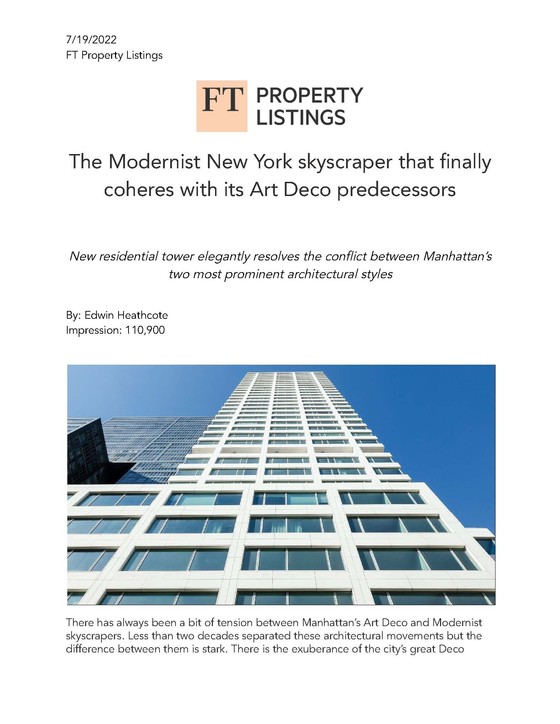
There has always been a bit of tension between Manhattan’s Art Deco and Modernist skyscrapers. Less than two decades separated these architectural movements but the difference between them is stark. There is the exuberance of the city’s great Deco monuments, built in the 1920s and 30s — the Empire State, Chrysler and Rockefeller buildings among them — and then you have the postwar corporate behemoths, led in their ornamental nudity and repetitive detailing by Lever House and the Seagram Building.
The biggest difference can be seen at the top of the buildings. While the Art Deco skyscrapers celebrated their height with spiky crowns and spires, the Modernists abruptly terminated these perfect, uniform slabs with a simple flat roof. A new residential building on Manhattan’s Upper West Side, designed by the Portuguese architect Álvaro Siza, seems to have finally resolved the conflict between the two styles.
Siza, now 89, made his career in his native Porto, building a series of houses and public buildings that were at once remarkably subtle and modest in means and the product of incredible architectural invention. His early houses have become cult places of pilgrimage and his outdoor pool and tea house at Boa Nova (1958-63) are among the most revered small works in the postwar architectural canon. More recently, he spread his wings with works from Argentina to South Korea, but he remains known for his usually white, always enigmatic, stripped-down, elemental architecture.
Siza never particularly dreamt of designing in Manhattan and yet, approached by
developers Sumaida + Khurana and LENY to design a tower at 611 W 56th Street, he
has built something special.